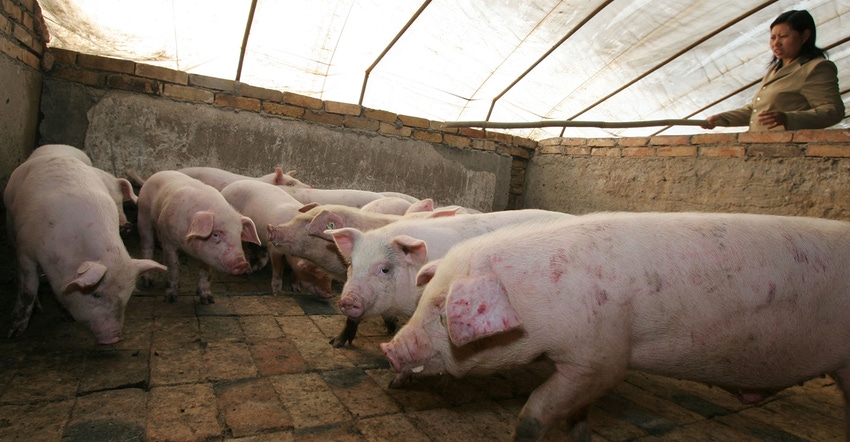G4 strain is not new, never been found in U.S. herds
U.S. experts say conclusions from swine influenza study in China lack context.

A recent research report out of China regarding a "swine influenza virus with pandemic potential" is making headlines around the globe, but according to the executive director of the U.S.-based Swine Health Information Center, the particular genotype isn't really breaking news and has been under the microscope for the past four years.
"This G4 genotype had been identified at least by 2016, if not before, so the thing is that there really isn't anything new and there isn't anything in that paper that would say that there's any more of a risk now than there has been before, nor any more of a risk from this one, as there may be from others that are out there," says Paul Sundberg.
According to the report, which was published in the Proceedings of the National Academy of Sciences, Chinese scientists isolated 179 swine influenza viruses from pigs across 10 Chinese provinces between 2011 and 2018, based on nasal swabbing done at slaughterhouses. The authors grouped the viruses into six genotypes, with the genotype resembling the prototypical Eurasian-avian H1N1 (EA H1N1) lineage (G1) predominating from 2011 to 2013.
However, since 2016 the predominant viral genotype has been one incorporating elements from both the 2009 pandemic lineage and the North American triple-reassortant lineage. Labeled G4 EA H1N1, the authors say the virus genotype exhibited features characteristic of the 2009 pandemic lineage, including preferential binding to human-like SAα2,6Gal receptor, efficient replication in human airway epithelial cells, and high infectivity and transmissibility in a ferret model.
Sundberg, who sat in on a panel discussion Tuesday with experts in influenza from across the United States, says while the group concluded that the science in the paper was sound, the conclusions lacked context.
"This was a monitoring activity that happened in the packing plants and when you get down to it, it is kind of a technical point, but because you find it in a packing plant, that doesn't necessarily mean you would find it on all the farms that those pigs came from," Sundberg says. "They could have contracted it from each other in the packing plant and that doesn't necessarily translate to the farms."
Sundberg says while we know there is potential for viruses to be shared from pigs to people and people to pigs, it's important to note that influenza in pigs in China, as a clinical manner, is rare, and the country rarely identifies primary influenza in swine, compared to the United States.
He also points out that since 2008, the USDA and Centers for Disease Control and Prevention have been cooperating in an ongoing influenza surveillance program in pigs and people and over the thousands of samples that have went through the diagnostic laboratories, the G4 strain has never been identified in the United States.
"I expect that people probably don't have an appreciation for the ongoing surveillance that USDA and CDC are doing together about swine influenzas, going from people to pigs and pigs to people," Sundberg says. "I think that's a really important strength for us. Because of it, we haven't found any evidence of this virus in the United States over multiple years within the surveillance system."
As for human exposure, the authors of the study examined more than 300 serum samples from workers on 15 pig farms and found that 10.4% contained antibodies against G4 EA H1N1.
"There isn't any report or any indication at all about any illness in these people," Sundberg says. "There certainly isn't any indication that there was any human-to-human transmission over the last three years. There was a small percentage of the people that they sampled that were seropositive and I don't know that that really conveys a quantitative risk. It is simply a report that there were some people that were seropositive, but it doesn't tell you anything about the people or how they got it. If they would have spread it person to person, you certainly could expect that they would have seen a higher seroprevalence."
Finally, because the G4 genotype has been identified for some time, Chinese health officials have already been working with the World Health Organization on a human vaccine candidate for this particular strain.
"The very issue here is everybody is sensitized about outbreaks and pandemics, and of course, you can't not be, here in the current climate," Sundberg says. "This was a potential headline and even people like Dr. Fauci talked about it. What he said was factual, but it lacked the context of conveying what has been going on historically with this virus in China and our U.S. influenza surveillance system."
About the Author(s)
You May Also Like





